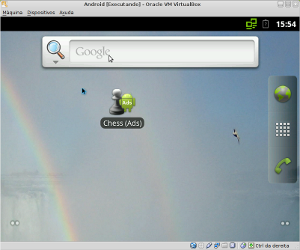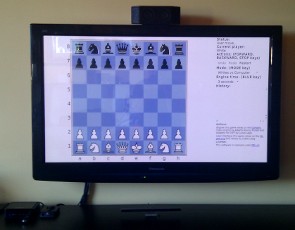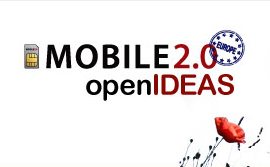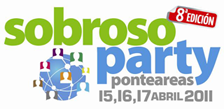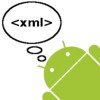MobileCONGalicia 2011
El viernes pasado, y gracias a la iniciativa de María Encinar (@encinar) y Martín Pérez (@mpermar), se llevó a cabo el primer evento para desarrolladores móviles en Galicia: MobileCONGalicia.
Las ponencias fueron de los más variado, tuvimos a:
- Eugenio Estrada (@eugenioestrada) un crack de Windows Phone nos metió a todos el gusanillo de desarrollar en WP
- Alberto Gimeno (@gimenete), desarrollador iOS nos habló de posibilidades de monetización de apps
- Elena Pérez (@ilnuska) experta en interfaces de usuario en @SpartanBits, puso a caldo (con conocimiento de causa) al equipo de diseñadores de Android
- Ricardo Varela (@phobeo), experimentado desarrollador curtido en 1000 batallas, habló de APIs móviles
- Martín Pérez (@mpermar), nos habló de Tropo, Phono y otras APIs de telefonía dándonos grandes ideas de oportunidades de negocio
- Hermes Piqué (@hpique) experimentado desarrollador Android e iOS que nos habló de Unit Testing
- Jordi Bonet de Softonic explicó como han reinventado su negocio orientándolo hacia las descargas móviles
- Finalmente, Nacho Sanchez nos contó su experiencia empresarial en @InqBarna desarrollando apps
Algunas de las presentaciones se pueden visualizar aquí
Yo participé con una ponencia sobre Android, y como la entrada al evento eran 25 euros (una ganga por cierto), hice una presentación con mis 25 consejos para los que comienzan a desarrollar; ya sabéis, a euro por consejo:
El evento terminó con un AppCircus del que fuí jurado junto con Miguel Sílva (@MSilvaConstenla de @Blusens, Elena (@Ilnuska) de @SpartanBits y Nacho de @INQBarna. Estas fueron las aplicaciones que se presentaron:
- PictoDroid: Excelente aplicación Android para permitir a las aplicaciones con problemas de expresión comunicarse mediante pictogramas
- Mussage: Aplicación IOS que permite enviar mensajes con canciones que están en la biblioteca del receptor
- Chove: Completo radar de lluvia para españa en Android
- Extremadura Rural: Guía offline de alojamientos rurales en Extremadura
- ReallyLateBooking: Aplicación IOS y Android para buscar ofertas de hoteles en el mismo día
- Binaurality: Método para aprender inglés basado en la escucha binaural para IOS y Android
- Bits4Meetings: Iniciativa para proporcionar un sistema de creación de aplicaciones para eventos personalizadas (de los creadores de Ipoki!)
- Berokyo: Aplicación iOS que permite organizar en estanterías documentos, contactos y medios digitales, sincronizándolos con DropBox
- Obradoiros Abertos: Aplicación que ofrece información geolocalizada de talleres, tiendas y puntos de interés de artesanía gallega.
- Absolute Defense: un shot’em up de gran calidad al más puro estilo R-Type
El nivel de las aplicaciones presentadas fué muy bueno. La app ganadora fue ReallyLateBooking, y la finalista Berokyo, esperamos haber sido justos. Mención especial me merece la presentación de Juan Porta de la aplicación Chove!, un tremendo showman más puro estilo gallego, que nos hizo pasar un momento estupendo, pena que no nos dejaran valorar la presentación.
Referencias en prensa/blogs:
- Noticia en Código Cero sobre el evento
- Noticia en Código Cero sobre el AppCircus
- Crónica de la MobileCONGal desde dentro por Martín Pérez (organizador)
Por si fuera poco y gracias a Blusens, tuvimos una fiesta del evento en una discoteca Santiaguesa, que se adentró en altas horas de la madrugada… Atención al detalle del gorro de Android de @IronSil, y curioso el efecto de “Ojos Blancos” de la cámara del Galaxy Nexus.




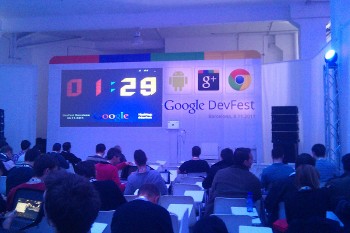 NEW IN HTML
NEW IN HTML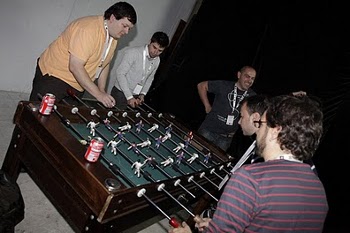 ANDROID SESSIONS
ANDROID SESSIONS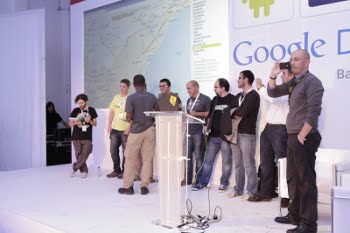 APP COMPETITION
APP COMPETITION